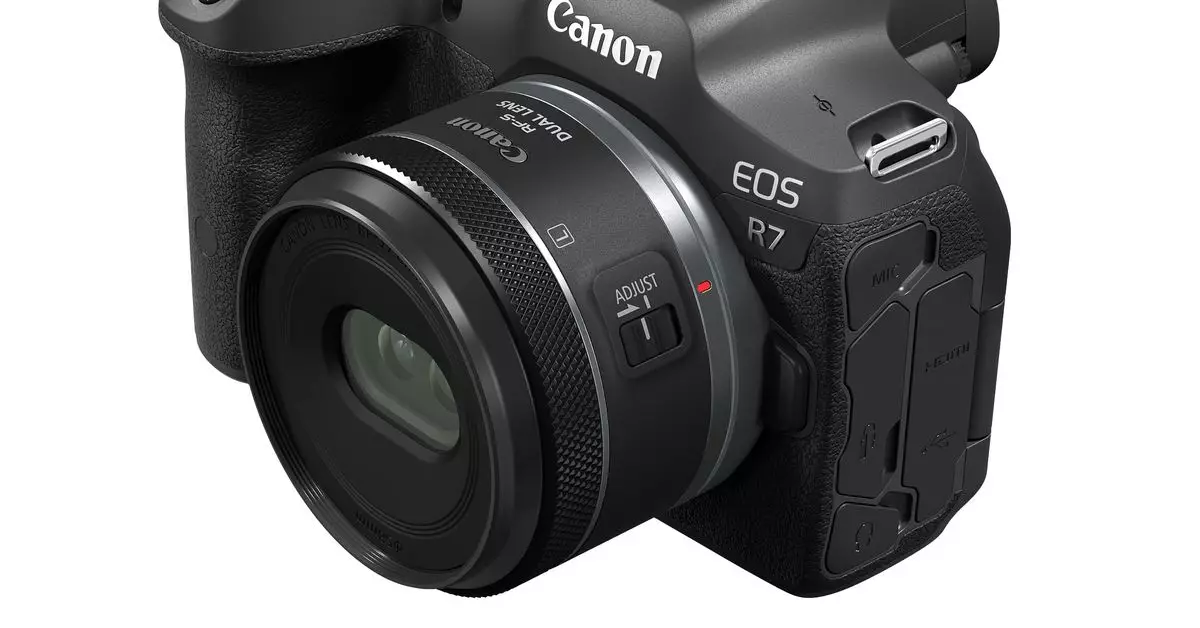Canon has stepped into a promising new era of imaging technology with the announcement of its RF-S7.8mm F4 STM Dual lens. This device, packed with advanced stereoscopic features, is designed specifically for creators who are eager to explore the realms of 3D virtual reality content. Originally unveiled during the Apple WWDC 2024 keynote, this lens not only reflects Canon’s commitment to innovation but also suggests a shift in how accessible high-quality 3D imaging can be for a broader audience.
As content creation continues to evolve, the demand for immersive platforms like VR and AR is at an all-time high. This lens is tailored for use with the Canon EOS R7, intended to cater to creators who may find it challenging to invest in pricier alternatives. By pricing the RF-S7.8mm at approximately $449.99, Canon is aiming to reduce barriers for budding videographers and enthusiasts. This approach marks a critical move in democratizing access to professional-grade 3D content creation tools.
However, there’s a looming question regarding the lens’s performance. While the price is appealing compared to Canon’s renowned but expensive dual-fisheye options, this lens’s capabilities—specifically its 63-degree field of view—raise some eyebrows. How does this narrower perspective affect the overall quality and sense of immersion in the final product?
Specifications and Capabilities
The RF-S7.8mm features a versatile aperture range from f/4.0 to f/16, allowing for adjustments that can yield various effects in lighting conditions. Autofocus capabilities add a layer of convenience for fast-paced shooting environments. Moreover, the inclusion of a manual focus adjustment for both sides creates unique opportunities for precise control during 3D shots.
Canon’s decision to align the stereoscopic elements in a straight path, with the front lenses only 11.8mm apart, has practical implications. It enhances the depth perception and dimension, particularly in close-up shots, as the most pronounced 3D effects manifest when subjects are between 6 to 20 inches from the lens. Still, this limited depth range could prove to be a limitation for filmmakers or 3D artists aiming for more expansive scenes.
When compared to Canon’s existing options—namely, the RF5.2mm F2.8 L Dual and the RF-S3.9mm F3.5 STM Dual, which retail at much higher prices—the RF-S7.8mm asserts itself as a more financially palatable choice. Yet, the disparity in specifications begs further examination. The higher-end models boast the ability to capture 180-degree visuals, closely mimicking human field of vision. In contrast, the RF-S7.8mm’s 63-degree capacity is more akin to traditional lenses. This begs the question: will the reduced field of view appeal to a market inclined toward immersive experiences?
Additionally, creators are reminded that 3D images and videos captured using this lens must undergo processing to be usable in VR or AR environments. This requirement adds another layer of complexity for potential users who may not be familiar with software like Adobe Premiere Pro or Canon’s EOS VR Utility. Though these tools offer powerful capabilities, they come with subscription fees that could deter novices from fully engaging with the technology.
As we look to the future, the success of the RF-S7.8mm F4 STM Dual lens will hinge on the adaptability of creators in leveraging its specifications and software processes. While it opens doors to new artistic possibilities, there remains a clear distinction between this and Canon’s more premium offerings. Canon’s strategic move to provide an affordable option should serve as an encouragement for other manufacturers to follow suit, influencing the availability of innovative imaging solutions in the market.
The RF-S7.8mm F4 STM Dual lens positions itself as a fascinating addition to Canon’s lineup, offering promising features at a more accessible price point. Whether this lens will fulfill the desires of its targeted creators, however, will depend on the balancing act between quality, performance, and the learning curve associated with integrating new technology into creative workflows.


Leave a Reply